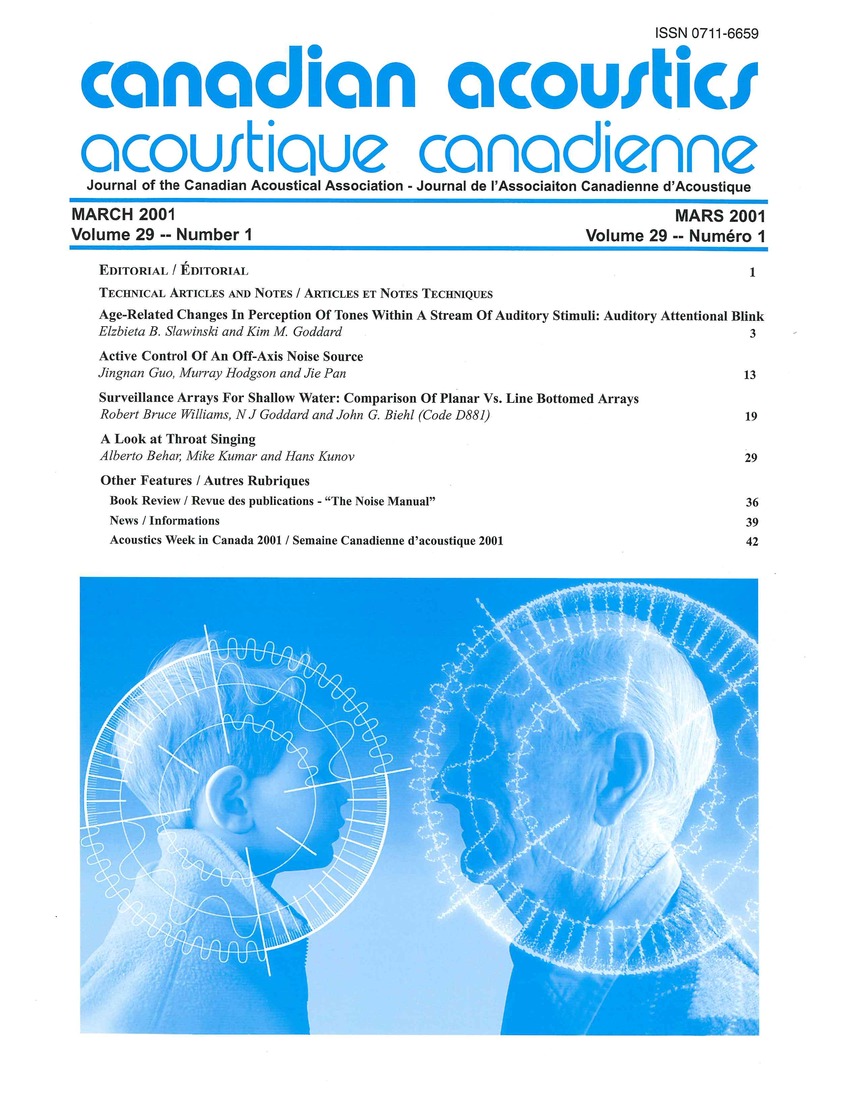Surveillance arrays for shallow water: Comparison of planar vs. line bottomed arrays
Keywords:
Acoustic noise measurement, Attenuation, Bandwidth, Detectors, Seawater, Signal processing, BeampatternsAbstract
A number of different array architectures, including horizontal and vertical line arrays and planar arrays, are currently being developed for shallow water applications. An objective of the work is to assess the performance of the different array architectures. To achieve this the arrays were tested during a sea trial (RDS-2) that took place in the Timor Sea in November 1998. This paper compares the broadband detection performance of two designs of array, a planar array (Octopus) and a Horizontal Linear Array (ULRICA HLA), at the RDS-2 site. Noise statistics and signal threshold levels presented here are obtained from ambient noise data. Significant differences in the dependence of threshold on azimuth are shown between the Octopus and ULRICA arrays and are attributed to the different geometries and hence beampatterns of the arrays. Signal data, obtained from a submerged sound source, are used in conjunction with the noise data to determine detection performance at a range of source levels. The results indicate that the detection performance of 16 element ULRICA and Octopus arrays is comparable at the RDS-2 site.Additional Files
Published
How to Cite
Issue
Section
License
Author Licensing Addendum
This Licensing Addendum ("Addendum") is entered into between the undersigned Author(s) and Canadian Acoustics journal published by the Canadian Acoustical Association (hereinafter referred to as the "Publisher"). The Author(s) and the Publisher agree as follows:
-
Retained Rights: The Author(s) retain(s) the following rights:
- The right to reproduce, distribute, and publicly display the Work on the Author's personal website or the website of the Author's institution.
- The right to use the Work in the Author's teaching activities and presentations.
- The right to include the Work in a compilation for the Author's personal use, not for sale.
-
Grant of License: The Author(s) grant(s) to the Publisher a worldwide exclusive license to publish, reproduce, distribute, and display the Work in Canadian Acoustics and any other formats and media deemed appropriate by the Publisher.
-
Attribution: The Publisher agrees to include proper attribution to the Author(s) in all publications and reproductions of the Work.
-
No Conflict: This Addendum is intended to be in harmony with, and not in conflict with, the terms and conditions of the original agreement entered into between the Author(s) and the Publisher.
-
Copyright Clause: Copyright on articles is held by the Author(s). The corresponding Author has the right to grant on behalf of all Authors and does grant on behalf of all Authors, a worldwide exclusive license to the Publisher and its licensees in perpetuity, in all forms, formats, and media (whether known now or created in the future), including but not limited to the rights to publish, reproduce, distribute, display, store, translate, create adaptations, reprints, include within collections, and create summaries, extracts, and/or abstracts of the Contribution.


